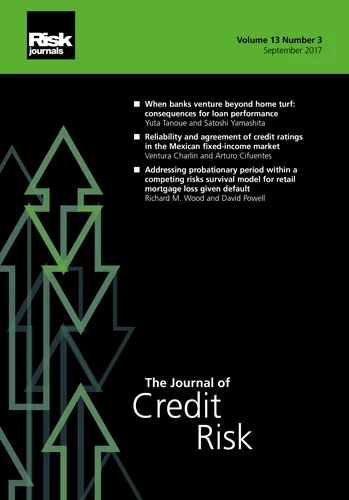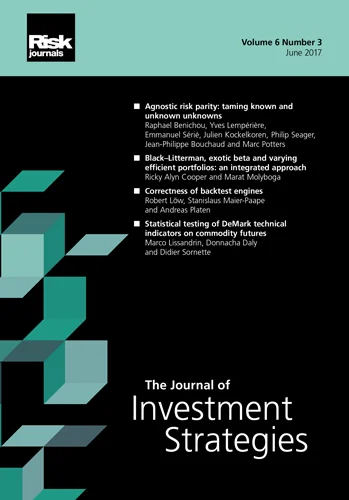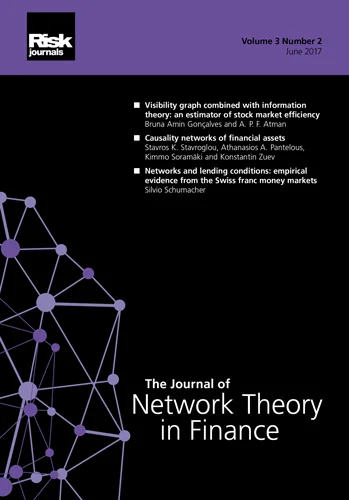Journal of Risk Model Validation
ISSN:
1753-9587 (online)
Editor-in-chief: Steve Satchell

A risk-sensitive approach for stressed transition probability matrixes
Need to know
- This paper presents a simulation based methodology for the stressed transition probability matrices under the structural credit risk framework. The derived stressed transition probability matrices are downgrade oriented and result in similar credit losses to the credit losses implied by observed downturn transition probability matrices.
- In this study, a conditional correlation model is applied to estimate time varying correlations between the rating based indices (i.e. credit cycle indices). Empirical results show an increase in the correlations during the National Bureau of Economic Research (NBER) contraction periods.
- The multivariate simulations, which consider dynamics of the rating correlations, employ a scenario selection procedure. The resulting scenarios present range of severities and are used to derive the transition probabilities that capture the stress conditions.
- The model applies a risk sensitive loss function which incorporates portfolio credit qualities and costs arising from rating migrations and defaults. The loss function improves the estimation power of transition probabilities by considering portfolio credit losses. The model results show sensitivity to the changes in the portfolio credit quality.
Abstract
An increased risk of credit-related exposures and the contagion effect of the recent global financial crisis have led to stringent regulations and the need for accurate credit risk models. Under the Basel III Accord, adequate stress testing models are required to have a strong capital base and to cover the unexpected losses for a range of risks. In this paper, a simulation-based methodology is proposed for the estimation of stressed through-the-cycle transition probabilities to provide a practical technique in stress testing. Unlike the traditional asset-correlation-based models, this study considers time-varying correlations between the rating migrations. An extended loss function, which is sensitive to the portfolio credit qualities and credit spreads, is applied to improve the estimation power of the transition probabilities. The model targets accuracy of credit loss estimations, and it is analyzed under different portfolio structures. The derived transition probability matrixes are downgrade oriented and capture the stress conditions.
Copyright Infopro Digital Limited. All rights reserved.
As outlined in our terms and conditions, https://www.infopro-digital.com/terms-and-conditions/subscriptions/ (point 2.4), printing is limited to a single copy.
If you would like to purchase additional rights please email info@risk.net
Copyright Infopro Digital Limited. All rights reserved.
You may share this content using our article tools. As outlined in our terms and conditions, https://www.infopro-digital.com/terms-and-conditions/subscriptions/ (clause 2.4), an Authorised User may only make one copy of the materials for their own personal use. You must also comply with the restrictions in clause 2.5.
If you would like to purchase additional rights please email info@risk.net








